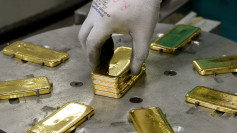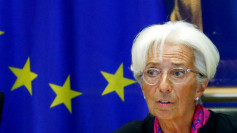Asia's stock markets posted welcome improvements in early Thursday trading following a historic surge on Wall Street Wednesday that saw the Dow Jones Industrial Average skyrocket to gain over 1,000 points - the highest in its history.
The Dow, the S&P 500 and the NASDAQ recorded gains of more than 4.9 percent.
In response, Japan's Nikkei 225 jumped 3.38 percent in while the Topix improved 3.94 percent. Both major indices climbed for the second-straight day after their Christmas Day hammering.
The Shenzhen and Shanghai exchanges, which are being closely watched because of Trump's trade war, saw gains in early trade. The Shanghai composite inched upwards by 0.76 percent while the Shenzhen composite rose 0.96 percent. The Shenzhen component saw gains of around 1.07 percent. Hong Kong's Hang Seng Index rose around 0.54 percent.
Australia's ASX 200 rose 1.36 percent, with all sectors seeing gains. South Korea's Kospi recovered from the earlier loss.
Bargain hunting, among others, drove yesterday's monster Wall Street recovery that saw the Dow Jones Industrial Average jump more than 1,000 points, making history as its biggest one-day point gain ever.
The Dow gained 5 percent or 1,086 points to 22,878. The benchmark S&P 500 gained 5 percent or 116 points to 2,467, while the NASDAQ rose 5.8 percent or 361 points to 6,554. Wednesday's gains allowed the S&P 500 step back from the brink of a bear market. This would have meant the end to the longest bull market for stocks in modern history after nearly 10 years had it occurred.
Wednesday's spectacular gains saw investors recoup all their losses from Wall Street's Christmas Eve plunge. It saw stocks rally across all sectors, giving markets their best single-day percentage gain in 10 years. Energy stocks improved the most as oil prices posted their biggest gain in more than two years.
Economists, however, described the historic market uptick as a "reflex rally" after Monday's plunge. Despite the rally, Wall Street's overall performance in December still leaves it on track for its worst December since the Great Depression.
A single day's rally won't change the overall market picture, however. The market's massive drop since October worsened this month, wiping out all of its 2018 gains and hurtling the S&P 500 closer to its worst year since 2008. Despite Wednesday's rally, stocks will attain their worst December since 1931 during the worst of the Great Depression.
Analysts said this is a market that remains heavily oversold, and typically investors expect a strong bounce following this situation.
Yesterday, gains in technology companies, retailers, healthcare and internet stocks drove the rally. Energy stocks also recovered as the price of U.S. crude oil posted its biggest one-day gain in more than two years.
Big retailers also profited. Amazon rose 6.9 percent to $1,436.47 while Kohl's gained 8.3 percent to $64.75. Homebuilders rebounded after an early slide following a report indicating that annual U.S. home price growth slowed in October.






